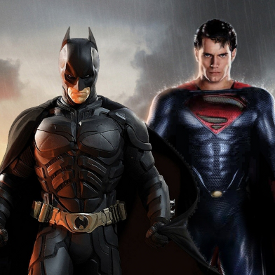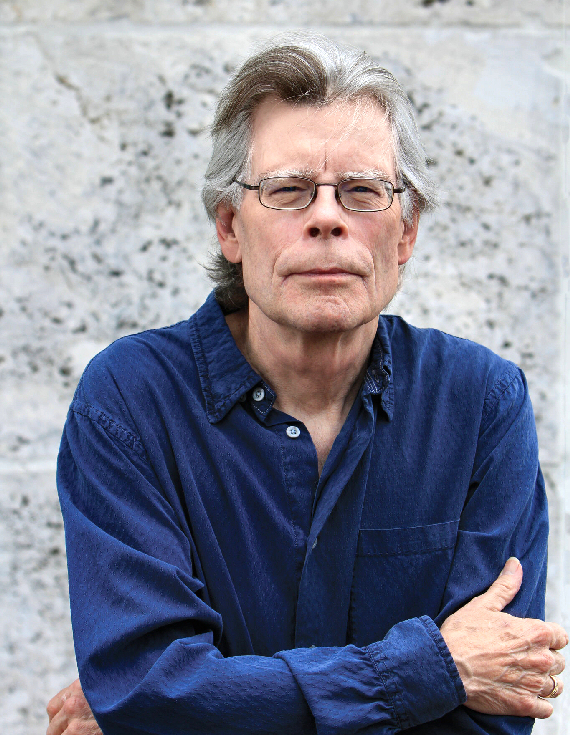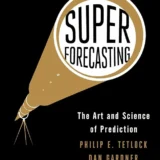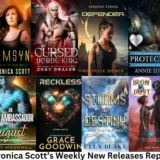FURY ROAD is a glorious contradiction of intention, a relentlessly forward moving carnival of destruction that never goes less than 100 mph while simultaneously presenting a narrative stuck in reverse. Or maybe to be more accurate a circle, a cycle of abuse repeating since the fall of civilization – drive the wasteland in a vain quest for survival and occasionally come across a group of innocents in need – a cycle which is preparing to rev up again when the Road Warrior finds himself a captive of globular oasis overload Immortan Joe (Hugh Keays-Byrne). The newest entry in the MAD MAX pantheon does nothing to expand or explore that dynamic; it cranks it up to eleven and leaves the audience to keep up as best they can with this loving heap of torn and dismembered parts – both mechanical and biological – produced as only George Miller can imagine it. But that’s the only thing on display. Gone is any patience with introducing Max to the villain he will be eventually working against, or even the innocents he will be helping. That’s screen time which could be better used for car crashes and destruction. Instead no sooner are we introduced to this new version of the character than the chase is on and Max is on with it, strapped to the front of one of the pursuit vehicles like a hellish hood ornament.

Drug along as an afterthought in the pursuit of a convoy of escapees, a mobile blood donor for one of Joe’s warboys (Hoult), Max soon finds himself front and center when his attempts to take advantage of the chaos to get free ends with him driving the escaping rig himself. And we’re drug along with him as writer-director George Miller pursues the Platonic ideal of a MAD MAX film as intently as a wasteland scavenger hunting for gasoline. Miller reuses the same structure and beats of every film in the series since 1981’s THE ROAD WARRIOR, trying to distill the nature of a MAD MAX film down to its essence. It’s like some sort of fever dream Miller experienced back in 1980 that’s never left him and like a man trapped in a never ending OCD cycle he must helplessly repeat it over and over and over again until he finds just the right conditions to escape it. Max isn’t in hell because he’s trapped roaming a post-Apocalyptic desert, but because he’s doomed to always end up piloting some giant tank-like vehicle while harassed by swarms of dune buggies and motorcycles attempting to deposit increasingly ridiculous cohorts of wasteland monster men onto the mighty machine.

To be fair it’s not all exactly the same as what has come before and of course the thing which has changed the most is Max himself, literally. The transfer from Mel Gibson to Tom Hardy has produced a Max who is less mad and more dour, haunted as he is by the child he lost in the first film. He’s also less needed. The image of his first appearance dragged along behind the various warboys and flaming cars pretty sums up his place in his own film. With no connection to the antagonist, no part of the instigation of the plot and being more of a helping hand in the climax than the center of it, Max has become a supporting actor in his own film.
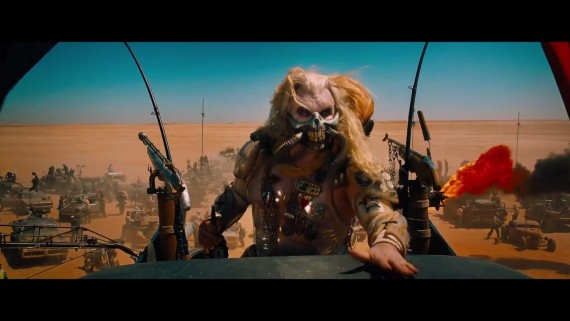
It is Imperator Furiosa (Theron) who takes the center stage here and, unlike other films in the series, she never cedes it. A Road Warrior in her own right and the first true foil Max has had working directly at his level, she is the film’s real protagonist, the person who set events in motion and has the direct relationship with the antagonist as one of his previous kidnap victims now looking to save some of his current slaves as much to rescue herself as them. And the focus never really switches off of her even once she and Max join forces, with the few quiet moments the film gets being used to delve into the backstory and emotional response of either Furiosa or Nux, the itinerant warboy they pick up along the way.
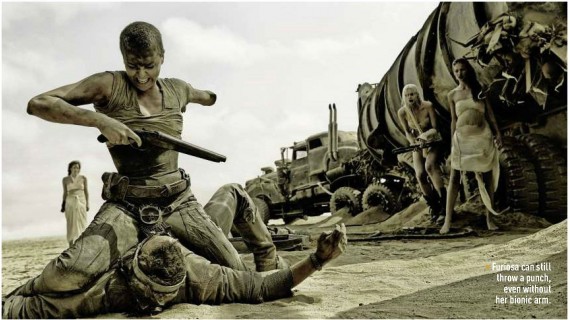
Which is the central problem of Max himself at least as Miller uses him. His story was essentially finished in the first MAD MAX (a film so jarringly different from any others in the series it would be easy to think of it as one off, unconnected in any way). More to the point, the repetition of plot which has hammered the series since THE ROAD WARRIOR has also trapped Max as well, leaving him stuck in the same character arc – here he must decide whether he wants to help the pregnant former slaves escape to the fabled Green Place, but he might as well be helping the gasoline pumpers escape to the coast or the Lost Children fly away from Auntie, it’s all the same. And Max can’t grow out of it because that would make it difficult for the Miller to continue redoing his story over and over again, which suggests Miller may have gotten tired of Max himself but can’t jettison him without giving up the franchise defining characteristic which allows the films to get made.

[Whether that is actually true or not is up for debate – one would have once thought the films couldn’t be made without Mel Gibson either].
In previous iterations this sort of set up worked because, though the supporting characters did most of the talking and observation, what they were observing was Max, telling us who they thought he was and keeping the focus on him. This time around it is Max who has been relegated to the position of observer from the first shot of him staring down into a canyon to the last of him looking up to watch to Furiosa ascend into the heavens. The problem with this is that the words Imperator Furiosa do not appear anyway in the films’ title, and there is some tension from the misaimed focus which, combined with the intentional repetition of well-worn elements from previous installments, leaves the films narrative pace stuck in neutral even as the road battles become ever more insane.
One could argue that is the real point of the film anyway and the rest is just extra. The stunts and design are as over the top and refreshingly ridiculous as ever, from Joe’s medal laced compression suit to the flame throwing guitar player who follows Joe’s crew around marking time for the pursuit vehicles. It’s a smorgasbord of ideas wrapped around a never ending car chase, and yet it never gets out of Miller’s control or becomes difficult to follow even stuntmen on poles start flying from one speeding car to the next. Max’s first knuckle bruising encounter with Furiosa is a master class in composing a fight sequence which should be studied by all up and coming action directors and should net Margaret Sixel and Jason Ballantine a couple of Film Editing Oscars next year.
There is no denying Miller’s capacity for either carnage or beautiful imagery and both are on display here – the detour by the escaping big rig into a sandstorm is as lovely as any image recently put on screen – as Miller reduces cinematic storytelling to its most potent form: the chase. Which suits all involved for the most part; at its heart FURY ROAD is about speed, raw, relentless speed of that sort that forces all questions or concerns into the rear view mirror because there is no time for them. There is only time for the next headlong crash as Joe calls in his allies and doubles down on his intent to capture the rig and its cargo of female slaves pregnant with his unborn children. Someone on the outside looking in might think the result, with its booming soundtrack and exploding visuals, was comparable to TRANSFORMERS or MAN OF STEEL or any other recent film similarly glorifying destruction for destructions sake. The difference of course is that unlike the makers of those other films Miller obviously has a brain, which makes his particular brand of violence entertaining rather than deadening, but it also makes it impossible to ignore the missed opportunities along the way. Still, though it can’t manage the basic steps of storytelling without tripping over itself, when FURY ROAD gives up on walking and goes straight to running, it becomes unstoppable.

Starring Tom Hardy, Charlize Theron, Nicholas Hoult, Hugh Keays-Byrne, Rosie Huntington-Whiteley, Riley Keough, Zoë Kravitz, Abbey Lee, Courtney Eaton, Megan Gale, Josh Helman and Nathan Jones


